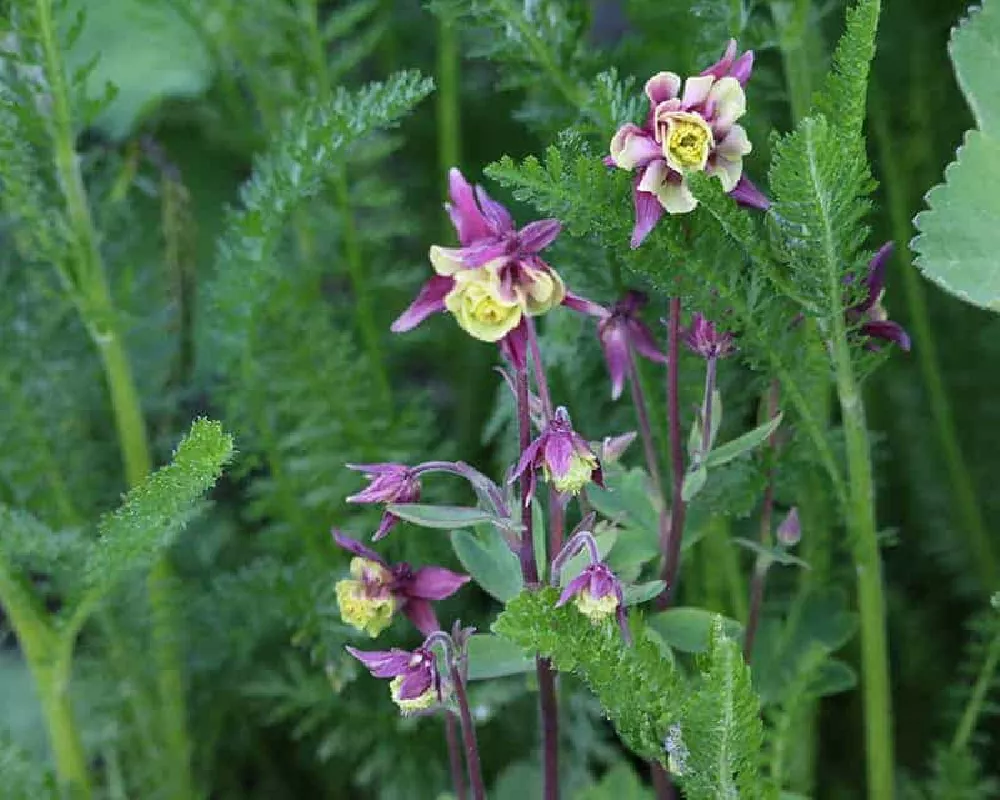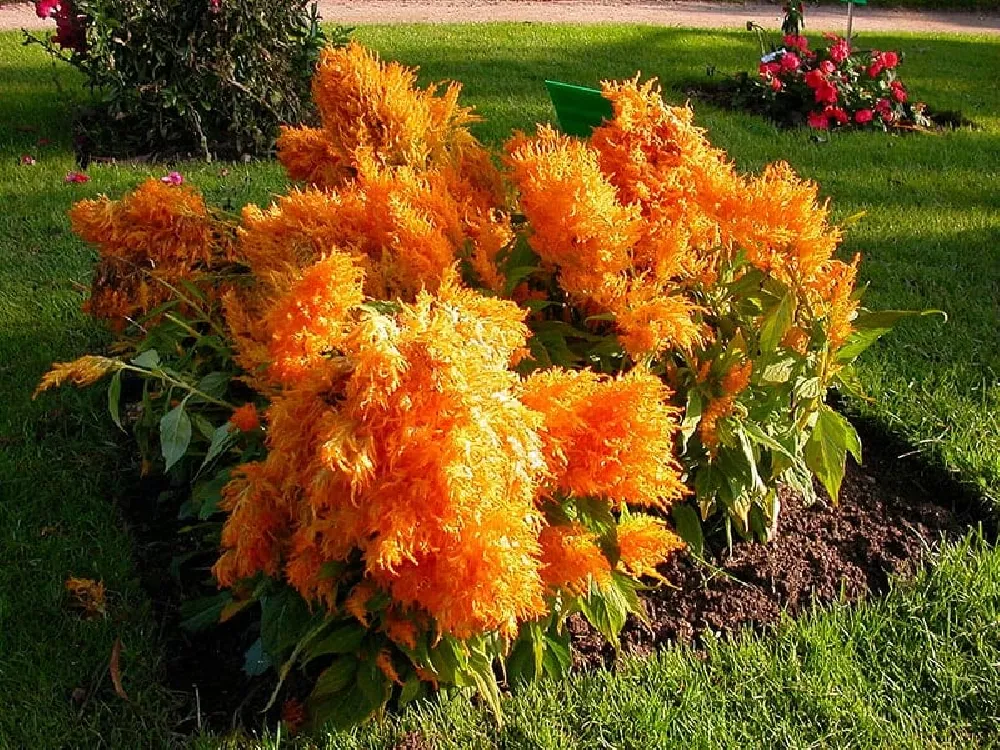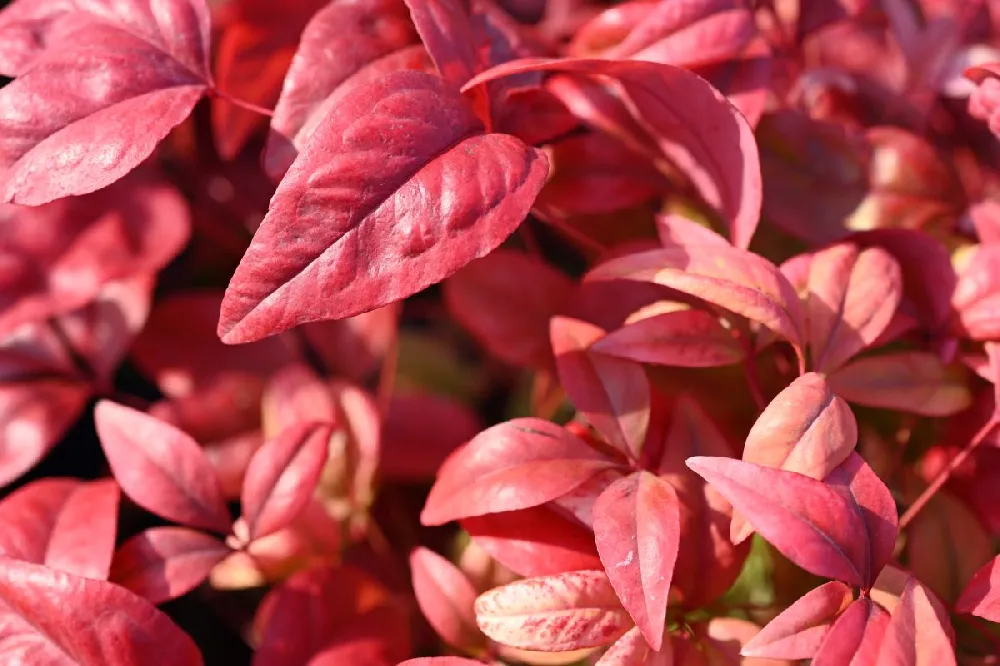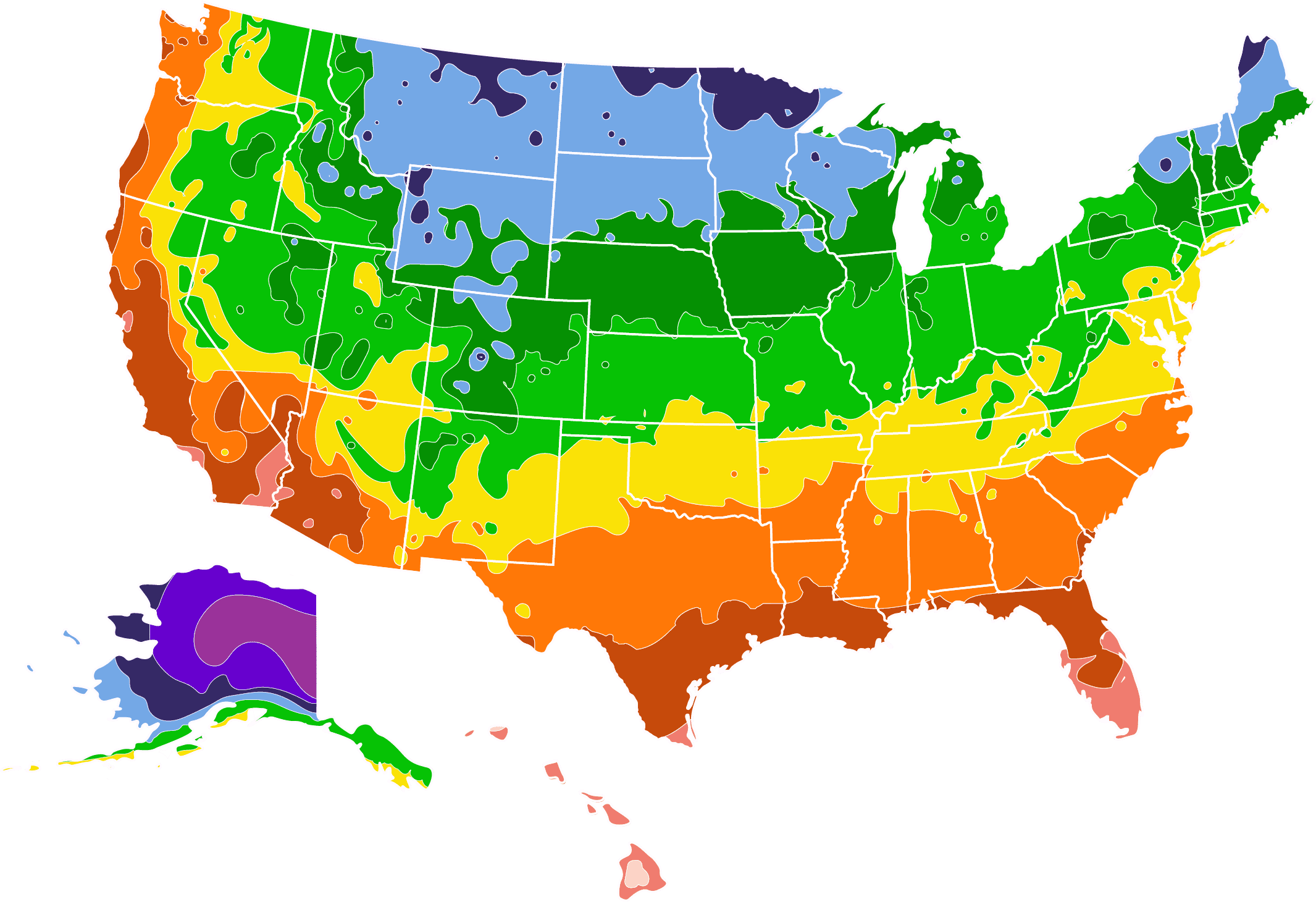- Home >
- Ornamental Plants >
- Columbine Flowers
Columbine Flowers for Sale - Buying & Growing Guide
Garden Goods - Red Columbine
Breck's - 1 Plant - Giant Columbine Mixture
Burpee - Columbine
High Country Gardens - Plant - 5" Deep Pot - Aquilegia-Chrysantha
Enter your zip code to find nearby stores that may carry this plant.
With its arching stems and small, colorful petals, the Columbine flower may look delicate, but this perennial is a relatively hardy flower that can grow in a variety of soils and tolerate various water conditions. Native to North America, Europe, and Central Asia, Columbine flowers grow well in most regions of the Northern Hemisphere, and are resistant to rabbit and deer. Taking time to research your regionally appropriate native Columbine will greatly benefit your local native pollinators. Columbine flowers are also notable because they:
- Are available in over 70 different species, and a rainbow of colors.
- Attract wildlife like hummingbirds, butterflies, and bees.
- Regularly used as borders in gardens, as they grow in clumps.
Planting and Care
Planting instructions
Columbine flowers are best grown from seeds, either planted directly in the garden, or grown indoors and transferred outside. These flowers can grow in a variety of soils, as long as they are well-draining. If you are planting your Columbine flowers outdoors, do so after the last spring frost. For zones 7-10, choose a planting site that gets part shade, dappled shade, or part sun. Loosen the soil, sprinkle the seeds on the soil surface, and gently press them into place. Do not cover the seeds. This flower is ideal for achieving colorful blooms in the shady areas of your garden.
If you are growing indoors, place the plant where it will receive indirect sunlight, and maintain even moisture, taking care not to oversaturate. Gradually acclimate seedlings to an outdoor setting before transplanting them to your garden.
Watering and nutrients
Young Columbine flowers must be watered regularly so the soil does not dry out. However, be careful not to overwater, as this can cause root rot. Once a plant is established, it will be fairly drought resistant. In most conditions, watering once per week is sufficient, although in periods of extended drought, you may need to increase watering frequency. Fertilizing is most essential when the plants are young, about three to four weeks old. Apply a starter solution or a light, slow-release fertilizer to encourage new growth and overall plant health.
Pollination
Some Columbine flowers need outside pollinators, such as bees, butterflies, moths, or hummingbirds for pollination, while others are self-seeding. Check the pollination needs of the particular variety you want to grow to verify its specific needs. When different varieties of Columbine flowers are planted near each other, cross-pollination is likely, which can alter the colors of the flowers. If you want your Columbine flowers to remain pure, do not plant multiple varieties in close proximity to each other.
Pruning
Light, year-round pruning will help your Columbine stay healthy and bloom to its fullest potential. This process is referred to as deadheading, in which dead or faded flowers are removed to make way for new blossoms. Once flowers ripen into seed pods, the plant’s energy will go toward seed development. If you want your plant to continue blooming, snip off the flower head at the base. You can also cut back old growth in the spring to encourage new growth and the production of more dense foliage. Prune away any weeds as well, as they can inhibit Columbine growth.
Pests, diseases, and animals
Most Columbine varieties are rabbit and deer resistant, so if these animals regularly visit your garden, this flower is a good choice to plant. Leaf miner is a common Columbine pest, but it can be controlled preemptively or after an infestation occurs with neem oil. Cutting the plant back after it has flowered can also prevent leaf miner infestations. In humid conditions, Columbine is also susceptible to powdery mildew. To avoid this fungal disease, make sure the air around your Columbine is well-circulating. Overwatering can lead to root rot, so make sure your soil is well-draining.
Light
The columbine flower enjoys full sun or partial shade, depending on the climate. In northern areas where the sun isn’t as intense in the summer months, the plant will happily grow in full sun, and this will help the development of flowers. However, though a sun-lover, this plant doesn’t like to get too hot, and therefore will need a position of partial shade in some climates. If you live in a hot southern climate, plant the columbine in a position where it will get full sun in the morning and shade in the afternoon. This will protect the plant at the hottest time of the day and give it some relief from the high temperature.
Temperature
The columbine flower is very hardy to low temperatures and can tolerate temperatures as low as -40 °F and -30 °F. It is suitable for planting in a wide range of climates, from hardiness zones 3 to 9. After the first frost, you can mulch over the plant to protect it during the winter months. In summer, the plant can be sensitive to very hot temperatures, so it will need protection in very hot climates. You can offer the plant protection by planting it in a shaded position; this is especially helpful if you can situate the plant in an area where it will be shaded in the afternoon when the sun is at its hottest.
Propagation
This plant grows easily from seed. If you want to give your seedlings a head start, you can plant them indoors around 6 to 8 weeks before the last frost of the season is expected. Prepare a container with rich potting soil and gently press the seed into the soil with a few inches between each seed. Do not cover the seeds with soil and supply adequate moisture and plenty of light.
Once the seedlings have developed, you can thin out the strongest, repotting them into larger containers or planting them directly in the ground after the last frost. Alternatively, you can sow the seeds outside directly in the ground following the last frost. Use well-draining soil, and thin plants out once seedlings emerge, leaving 1 or 2 feet between each plant to allow sufficient growing space.
Once established, the columbine plant will self-seed easily, giving you a continuous supply of new flowers each year. It is recommended to allow self-seeding as each plant only has a short life span of two or three years; however, if your garden becomes too heavily populated with columbine flowers, you can cut away the seed pods after the flowers fade in summer to prevent self-seeding.
If your plant does not flower in its first year, this is not unusual, as columbine flowers typically only begin flowering in their second or third year when sown from seed. Once the plant is flowering, you can regularly deadhead it to encourage the production of new flowers.
Flowers
There are over 70 species of columbine flowers that range in colors, including purple, yellow, pink, and blue, in various shades from pastel to bright neon. The flowers are bell-shaped and have spurs (long and thin colorful petal-like structures shooting out of the back of the flower) that resemble the talons of an eagle, which is how the flower came to get its scientific name, as ‘Aquilegia’ is derived from the Latin word ‘aquila,’ which translates to ‘eagle’. Interestingly though, the common name for the flower of ‘columbine’ is derived from the Latin ‘columba,’ which translates to ‘dove,’ a gentle bird that has the opposite connotations of the predatory eagle.
Toxicity
The level of toxicity for the Columbine flower is disputed, with some sources claiming that just coming into contact with the plant could be fatal. The plant does contain carcinogens and aconitum, which can cause problems for the cardiovascular system, though the most typical symptoms from ingesting this plant would be stomach upset and diarrhea.
While all parts of the plant are toxic, the highest concentration of the poison is found in the roots and the seeds. It is known to be toxic to pets, including horses, though fortunately, it is not especially appetizing, and most animals will instinctively stay away from it. The plant is also toxic to humans, and it is an old wives’ tale that this plant was once used to induce abortions for unwanted pregnancies. The sap of the plant also contains an irritant, which can cause unpleasant skin symptoms if you come into contact with it. Always wear gloves when handling the plant as a precaution (The Equinest).
Common Problems
This plant is rabbit and deer-resistant, and many varieties are also disease-resistant. It is also not commonly affected by insect infestations. The exception to this is leaf miners, which some varieties of columbine flower are susceptible to. This can be organically controlled with neem oil sprays, which prevent leaf miners from feeding, thereby gradually killing them off. Another way to control leaf miner problems is to cut the plant back to ground level after it has flowered, as this will remove the pests, allowing the plant to regrow free from pests the following year. You can also use neem oil preventatively if your plants are prone to leaf miner infestations.
Columbine Flower Varieties

There are over 70 different varieties of columbine flower plants, with many more cultivars based on the most popular varieties. They are all surprisingly hardy, considering their delicate look, and require minimal care.
Aquilegia canadensis ‘Eastern Red Columbine’ or ‘Canadian Columbine’

This plant is native to eastern North America, growing wild in woodland and along rocky slopes. It features foliage in a fern style, with long stalks held high above the leaves from which drooping flowers emerge. The flowers are red and yellow, growing up to 2 inches in size. This variety of columbine flowers is exceptionally disease-resistant, as well as rabbit and deer-resistant. It has won the prestigious Award of Garden Merit from the Royal Horticultural Society. Though short-lived, this plant self-seeds easily, providing the native areas where it grows with large clumps of the elegant flowers.
Aquilegia vulgaris ‘Clementine Rose’

This columbine flower closely resembles the flower of the clematis plant. It is a cultivar of the ‘Aquilegia vulgaris,’ which is the most popular columbine variety and the one you are most likely to see growing in gardens or nurseries. It has double flowers of up to 1.5 inches in diameter on stems that rise elegantly above the foliage below. Unlike most columbine flowers, the variety does not feature spurs, and it is more compact than most other varieties, making it suitable for planting in containers. This variety has flowers in an appealing medium pink color, though other colors are available in the ‘Clementine’ series, including ‘Clementine White,’ ‘Clementine Blue,’ and ‘Clementine Salmon Rose.’
Aquilegia caerulia ‘Rocky Mountain Columbine’ or ‘Colorado Blue Columbine’

This variety is native to North America, from Montana to New Mexico. It is Colorado’s state flower and is a popular addition to gardens in this region. It grows well in rocky conditions and is drought-tolerant. With 3-inch-wide flowers featuring two-tone blue petals and yellow stamens, this plant is very visually striking. The flowers point upwards on long stems held high above the fern-like foliage. It grows in clumps of up to 24 inches tall, with flowers that bloom for 4 to 6 weeks. This plant requires well-draining soil and will not do well poorly draining soil.
Aquilegia formosa ‘Western Columbine’ or ‘Crimson Columbine’

These elegant nodding flowers bloom on long stems rising above blue-green foliage, in vibrant red with yellow accents. Flowers measure up to 2 inches across, with the plant growing up to 36 inches tall. This variety is rabbit and deer-resistant, though it is frequently affected by leaf miners.
FAQs
Is the Columbine flower poisonous?
Yes, Columbines are toxic to humans and animals, including cats, dogs, and horses. Most animals know instinctively to avoid this plant, but if you have a pet who is known to chew on flowers, it’s best to keep Columbine plants out of their reach. The roots and seeds are the most toxic part of the plant, and can cause upset stomach and diarrhea if ingested. The plant’s sap can irritate skin, so always wear gloves when pruning or planting Columbine.
Are there multiple varieties of Columbine flower?
Yes, there are over 70 different Columbine varieties. Some are native to North America and Canada, some are native to Europe and Central Asia, and others are the result of cross-pollinating different varieties. Some of the most popular Columbine varieties are clementine rose, a compact variety ideal for planting in containers; Eastern red Columbine, which has long stalks with drooping red and yellow flowers; and Colorado’s state flower, Rocky Mountain Columbine, which features two-toned blue and yellow flowers
How do you propagate Columbine flower?
Columbine flowers grow best from seed, as the rootstock and foliage do not respond well to dividing. Give seeds a head start by planting them indoors six to eight weeks before the last expected frost. Press the seeds into rich potting soil, without covering, and provide plenty of light and moisture. Repot the strongest seedlings into larger containers, or transfer them into the ground. Columbines may not flower in their first year but will typically flower by the second or third year.
What kind of light conditions are best for Columbine flowers?
This depends somewhat on your location. In cooler regions, you can plant or place your Columbine flowers in a location where they will receive full sun. However, in warmer climates where the sun is more intense, this plant prefers partial shade. If you live in a warmer southern region, plant or place your Columbine in a location where it will receive full sun in the morning but be shaded in the afternoon when the sun is at its hottest.
How long do Columbine flowers live?
Columbine is a perennial, which means it will regrow each year, so long as the plant is healthy. However, these flowers do not have particularly long lifespans. On average, you can expect a Columbine plant to live three to five years. However, they are resilient plants, and should grow well during their lifespan if they receive proper care. Allowing Columbine plants to self-sow can help ensure their longevity.












